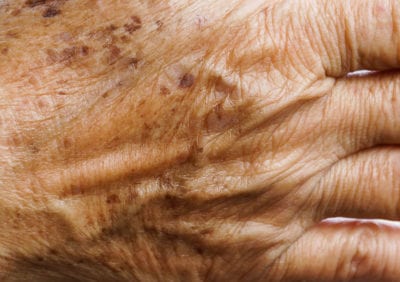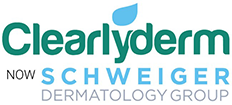Age Spots Removal Dermatologists
Feeling beautiful has no age limit.

Age spots are flat tan, brown or black spots. They vary in size and usually appear on the face, hands, shoulders, and arms — areas most exposed to the sun. Age spots are very common in adults older than age 50. However, younger people can get them, too, especially if they spend a lot of time in the sun. You may have also heard them called “sun spots” or “liver spots.” One of the best and most natural ways to prevent age spots is to limit sun exposure and wear sunscreen.
True age spots are harmless and do not need treatment. However, some people may choose to have them lightened or removed for cosmetic reasons. Additionally, age spots can look like cancerous growths, which makes it important to get them checked out if they change in appearance.
The age spot removal dermatologists at Clearlyderm can assess your skin and help you find the right liver spot treatment.
Symptoms of Age Spots
How can you tell if it’s age spots? Unlike freckles, age spots never fade with decreased sun exposure. Once they’re there, they stay there, unless you opt for liver spot treatment.
Some of the other signs of age spots include:
- Spots are tan to dark brown in color
- They’re often found on the backs of your hands, tops of your feet, your face, and shoulders
- Range from the size of a freckle to roughly ½ an inch
- Often grouped together
If the spots turn black or change in appearance, see a Clearlyderm dermatologist. Changes like this may be signs of melanoma (a serious form of skin cancer). Early detection and treatment is key to curing melanomas.
Liver Spot Treatments
There are several liver spot treatment options available to lighten or remove age spots.
Some of the treatments performed by Clearlyderm’s age spot removal dermatologists include:
- Laser Therapy – Laser therapy destroys melanin-producing cells (melanocytes) without damaging the skin’s surface. These extra melanocytes create the dark pigment. Laser therapy treatment will not damage the skin’s surface and has few side effects. Laser therapy generally requires several sessions and after treatment, age spots gradually fade.
- Freezing (Cryotherapy) – This procedure involves applying liquid nitrogen to the age spots to destroy extra pigment. As it heals, the skin will appear lighter. Cryotherapy poses a slight risk of permanent scarring or discoloration.
- Medications – Prescription bleaching creams (hydroquinone) used alone or with retinoids (tretinoin) and a mild steroid may gradually fade the spots over several months. Use a broad-spectrum sunscreen with a sun protection factor (SPF) of at least 30 if you use medication treatments.
- Chemical Peels – A chemical peel involves applying an acid, which burns the outer layer of your skin, to the age spots. As your skin peels, new skin forms to take its place. Several treatments may be necessary before you notice any results.
Our age spot removal dermatologists can help you get your skin’s natural glow back.
Scheduling an Appointment
Clearlyderm has six South Florida locations in Boca Raton, Boynton Beach, Delray Beach, and Fort Lauderdale. This makes it easy and convenient to find an office near you.
Contact us today for a dermatology consultation.
Why We’re Different
Clearlyderm is a family-run business with all of the advantages of a large medical office. Our providers take the time to understand your needs and history, in order to develop a treatment plan that’s tailored to you. If you need a prescription, we will work to find one that’s covered by your insurance. We also offer holistic options for skin care, when possible. It’s our way of showing you that we care about you as a patient — and a person.
Related Blog Posts
Helpful Resources







